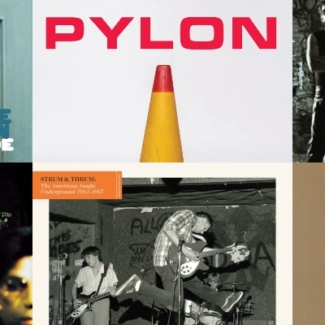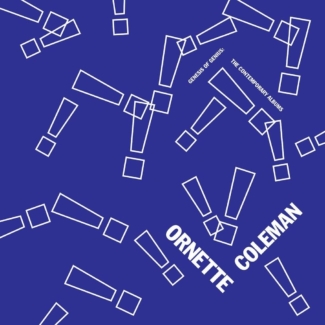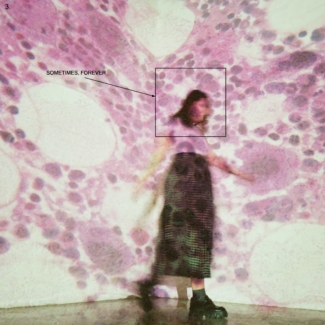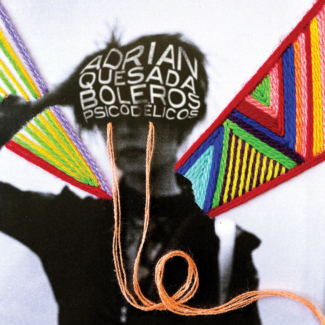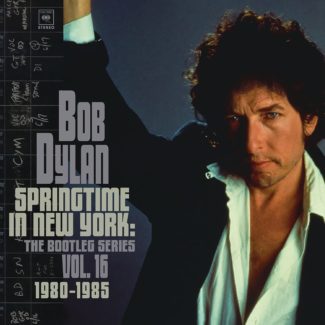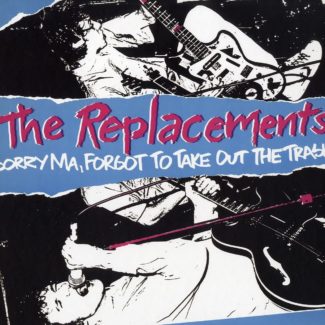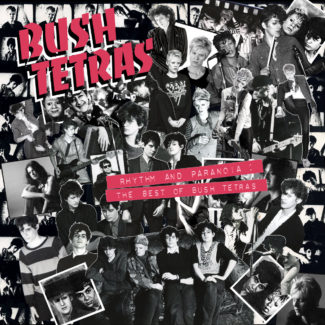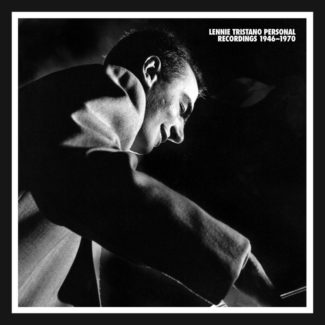In the age of music streaming, here are a few of the year’s best collections you might actually want to own.
 Prince
Prince
Sign O’ The Times (Super Deluxe Edition)
(Rhino)
With Prince, there were always questions. For every moment of euphoria he delivered, there was a head-scratcher: The recalled Black Album. The unpronounceable glyph. The Jehovah’s Witness conversion. Under the Cherry Moon. This reissue of his acclaimed 1987 double album follows the pattern of the previous Purple Rain and 1999 packages, overflowing with unreleased treasures from his archives. Sign includes a version of one of his pinnacles, “I Could Never Take The Place of Your Man”, recorded a full EIGHT YEARS before its eventual release. How could Prince sit on all of this? One answer: the execs at Warner Brothers, who tried to throttle down a brilliant mind that kept the accelerator pegged. And Prince himself was unpredictable. Not prone to baby steps (he painted SLAVE on his forehead while escaping his Warners contract) Prince moved impetuously, scrapping ideas, songs, entire projects. SIgn was his first release after jettisoning the band that brung him, the Revolution; a reason this disparate set was considered such an unanticipated triumph. He seemed to be saying “Look at everything I can do.” The real backstory of SIgn is more complicated, and over a year in the making. Prince and his main Revolution collaborators Wendy and Lisa, were working on the double album Dream Factory until the band imploded. With Prince rarely bothering to leave the studio, another project called Camille began, then stopped, as material from both morphed into the huge Crystal Ball album. Warners had Prince whittle that down to the unintentional 16-track masterpiece we’ve come to know. Hearing all this additional material makes it clear the vetting was not easy. Unless you’re an avid bootleg collector, there are over sixty songs on this set you have not heard before. The Revolution material transforms into leaner, horn-punctuated funk (on tracks like “Strange Relationship”), and seems to offer a clue as to why Prince felt the need to move on from his eighties-drenched past. Maybe. The intensely private artist never revealed much. The Revolution live tracks included here do go on a bit, and maybe the single mixes are a bit superfluous. But among the three full discs of unreleased ‘vault’ material, it’s futile to pick favorites. Even those skeptical of one album being inflated into an eight-CD set are going to be hard-pressed to find weak any spots. How is this possible? Four years since his death, it seems almost impossible to believe artistry at this level once existed. Thankfully, we’re still getting proof.
– Jeff McCord
5
 Steve Wynn
Steve Wynn
(Real Gone Music)
With his incendiary Dream Syndicate in the rearview mirror, Steve Wynn set out for New York City. Born and bred in California, he’d long nursed a hunger for the city’s edge and vibrancy. Wynn hadn’t slowed up after the Syndicate’s 1989 bust-up. By the mid-nineties, he had a few solo albums and side projects (the indie ‘supergroup’ Gutterball, and a co-writing venture with Green and Red’s Dan Stuart they called Danny and Dusty) under his belt. Yet landing in Manhattan, Wynn would latch onto the city’s pulse and reach a new creative milestone. This 166 song set, which completely fills eleven CDs, has all seven albums Wynn released in this period, but that’s only part of the story. For ten years, Wynn seemingly never stopped working. He wrote notebooks of songs, assembled a new band, (the Miracle 3 – still active today), collaborated with everyone from Eleventh Dream Day to George Pelacanos, and kept the recorders running. Meticulously chosen and annotated, there are close to sixty unheard tracks here. A few are skeletal, even silly. But all bite with voltage and fervor. Decade is an abundant delight for diehard fans and ambitious newbies alike
– Jeff McCord
4.25
 Pylon
Pylon
(New West)
Envious of the B-52’s success, this Athens quartet stood ready to follow their friends into fame, and the fact they really didn’t know how to play music wasn’t going to stop them. Formed in 1978, Pylon sounded like one of those bands that had never really listened to any kind of music before. They shared only the B-52’s metronomic beats. Instead of thrift-store kitsch, Pylon appeared angsty, nervy. Guitarist Randal Bewley played in simple open tunings, bassist Michael Lachowski followed along with repetitive single-note patterns. They recruited their landlord, Curtis Crowe to be the drummer; he seemed oblivious of everything but the kick drum. And vocalist Vanessa Briscoe was no Kate Pierson; she stuck to two styles, flat intonation, and shrieking. The dance beats made Pylon a party band, that is,if you were a party-goer that stood in the back of a room looking as if you’d rather be anywhere else. So, of course, the post-punk crowd adored them. Time solidified their sound, and signing to the same Atlanta label (DB Records) that released the B-52’s first single, Pylon would record numerous singles and two albums, before calling it quits in just five years. The box includes all this material, plus the ultra-early (and ultra-primitive) Razz Tape and other assorted extras, some of them previously unreleased. Pylon’s minimalism became infectious not through melodic hooks but through sheer repetition. With music was made up of riffs and vocal mantras, they aspired to no grand statements (Unlike, say, the Gang of Four, who they obviously influenced). In contrast to their likably amateurish debut Gyrate, their second, 1983’s Chomp, sounds like Sgt. Pepper. Mitch Easter (fresh off producing the debut EP Chronic Town for friends and Pylon fans R.E.M.), added subtle sonic embellishments to a rhythm section grown locked-tight and made their new (and best) material pop. Eccentric outliers like “Beep”, “Crazy”, “K”, and “M-Train” helped cement the band’s cult status. Yet with their fortunes rising, they suddenly called it quits. Maybe they had hit a creative wall. Or maybe they really were as indifferent as they pretended to be. Whatever the reason, they never recorded again. Pylon would manage a few reunion shows over the years, but Bewley’s death stopped even that. It might seem odd to release a comprehensive box set from a not-that-successful band that holds such a dated, you-had-to-be-there vibe. But Pylon fans can’t get enough, their unique music just doesn’t let go. If you’re not there yet, you really owe it to yourself to try.
– Jeff McCord
4.25
(Note: While available to stream, the initial pressing of this box has sold out. Orders are being taken for a spring repressing.)
 Tom Petty
Tom Petty
(Warner Brothers)
Petty’s free-wandering 1994 solo album, produced by Rick Rubin, somehow managed to sound both intimate and important, a vital yet distinct addition to his catalog. Freed from the constraints of his working band, Petty took license. (Though it’s notable the hits, “You Don’t Know How It Feels” and “You Wreck Me” both would sound at home on a Heartbreakers record.) He and Rubin recorded many more songs than those included in the original release, which he always hoped to revisit. The ten ‘outtakes’ here include songs better than those on the original album; they could have made another solid release on their own (which Petty briefly considered). The rest of this expansive reissue is enjoyable but doesn’t add that much to the appreciation of the original. On the live material, Petty seems to loosen up more than his usual stick-to-the-records performances. The home recordings are interesting to hear, too, but only bear witness to how he and Rubin took the material exactly where it needed to go. – Jeff McCord
4
Various
Strum & Thrum: The American Jangle Underground 1983-1987
(Captured Tracks)
As a knee-jerk reaction to the Anglophile worship of the new wave era, a new era of American college-rock launched in the late eighties, Guitar-driven (keyboards were out), rootsy, loud and melodic, the scene felt omnipresent. Its influence even spread back overseas. The movement’s clear leader was R.E.M., but there were hundreds of these bands, many of them ending up with major label deals (including here in Austin, where the scene was sarcastically called “New Sincerity”). You’ll find none of them on Strum & Thrum, a compilation of bracing, youthful and joyous also-rans. A few, like the Windbreakers, Downey Mildew and 28th Day, had regional followings, but even among the acts you’ve never heard of, very few miss their mark.
– Jeff McCord
4
 Neil Young
Neil Young
Archives II: 1972-1976
(Reprise)
In 2009, Neil Young released the first volume of his Archives collection, something he had been promising as far back as the eighties. The prospect of unreleased gems from his early years with the Squires, Buffalo Springfield, CSNY, and classic early albums like Harvest made the pre-release excitement palpable. Yet, once released, to those expecting the set to be comprehensive, song choices seemed arbitrary. Some classic tracks were inexplicably missing, some of the ‘unreleased’ tracks had already been released in single-CD format. To ensure the set was heard in the best quality audio, Young only offered it on DVD and Blu-Ray, a format in today’s households only slightly more popular than Pono. Digital downloads were included, but they were, inexplicably, mp3’s. (Among Young’s quirks, I’m 100% with him on this point. Mp3 is a garbage compression format never intended for use with music.) A CD version of the set was also later released, as an apparently limited edition. You can now snap one up on Amazon for a mere $900. So years ago, when Archives Volume II began to be discussed, fans were hopeful lessons would be learned. Volume II covers the On The Beach/Tonight’s The Night/Zuma years, representing Young at the peak of his powers. This time, the set is only on CD (ten of them, longer than its predecessor), yet the presentation is better constructed. The music spools out, not in the artificial album constructs fans memorize, but in the order and headspace in which Young created them. Given a new context, even the familiar feels different. And much of the previously unreleased material is a delight – romps with the Stray Gators, Stills/Young & CSNY, a 1976 Crazy Horse live set, a full disc of rarities (revealing early takes of the well-known and obscure). But yeah, again, archival items already released in single-CD format are included. The set isn’t cheap, either. But it’s hard to imagine a better lockdown immersion for Young devotees. That is, if you could buy the thing. When finally announced, it was only offered in a limited edition of 3000, which sold out immediately. To listen, you can (and should) pay the ridiculously cheap subscription rate for Young’s lavish online archives site, neilyoungarchives.com. You can listen to Archives II (in high-def audio), and dive into a vast collection of Young ephemera. But for collections of music this valued, this vital – some people still want to own them, read the booklets, put them on their shelves. 3000 copies? Really? The market is clearly not that weak. Reprise has now announced a smaller box with the same music, for sale in March 2021, which you can preorder. But it’s not like this, or Volume I, were lavishly-produced leather-bound packages. But why make either of these Archive collections limited at all? It shouldn’t be this complicated, but in a year where everything has been, find a way to hear Archives II. Young has never been better.
– Jeff McCord
5
 The Rolling Stones
The Rolling Stones
Goats Head Soup [Deluxe Edition]
(Interscope)
As much as anything, it was its place in time. Snapping the Stones’ unprecedented streak of their four greatest – Beggars/Bleed/Sticky/Exile – Goats’ place in the band’s catalog is more infamous than famous. American Jimmy Miller, who produced Goats and all four of the previous classics, was sinking into alcoholism. Mick Taylor, Bobby Keys and Keith’s drug abuse were all worsening, too. Maybe none of this would have mattered if the songs were there. They weren’t. “Angie”, the hit, felt rote and insincere. “Heartbreaker” and “Star Star” rocked, “Coming Down Again” is a near-perfect drug dirge, the leftover “Silver Train” still has a bit of life to it, but as for the rest, they’re not really there. The Stones and Miller tried to adopt a more Seventies-friendly funk sound. Adding in Billy Preston was a nice touch, but the murky gloss tended to bury the material. The remastered reissue (in multiple sizes and formats – and prices) lifts the haze a bit. And if it has been a while since you’ve heard it, its best moments hold up. There a few genuinely interesting outtakes, too- the sloppy vibe of “All The Rage” and “Criss Cross” is endearing, and the surprising “Scarlet” with Jimmy Page would have made a nice substitute in the original album’s dead zones. The live material (from a ‘73 Brussels show) shines in spots, too, the sound nicely improved from the bootleg versions. So measure your Stones devotion and pick an appropriate version of this reissue. Disappointed in the tepid reaction to Goats, the Stones wouldn’t try to recreate the magic with Miller again. Too bad, he still had great work ahead of him. There would be a few more rallies for the Stones ahead, but Goats also marked the first glimpse of a future for the Stones that was, at the time, unimaginable, a time when their albums simply ceased to matter. -Jeff McCord
4
 Lou Reed
Lou Reed
(Rhino)
Fifteen albums into his solo career, it felt like a renaissance. With weird production – distant acoustic/electric guitar pairings, drums from another room, vocals wayyy out front – Reed didn’t want you to miss a word. He was telling a story he knew well – the fortunes of the city of his birth in the era of AIDS and Ronald Reagan. 1989’s New York, reissued in a deluxe double-lp, 3 CD and DVD package, feels as relevant as ever. And on this remastered version, the music jumps out at you. New York is his most conceptual and personal work, and raw stories like “Romeo Had Juliette”, “Busload of Faith”, “There Is No Time”. “Strawman”, “Dirty Boulevard” rivet your attention. The extra material here – a full live concert (uneven), work tapes (interesting), and a Canadian performance DVD of the album that includes an interview and hi-res audio, is nice to have even if it does little to embellish the message. There were many highlights in Reed’s career, which was also punctuated with missteps and excesses. But on New York, angry yet focused and sober, Reed said everything he wanted to say.
– Jeff McCord
4.5
 Various
Various
(Third Man)
The latest in a series of excellent vinyl-only Third Man Detroit compilations, presumably curated by Jack White, takes a bit of a left turn. The previous anthologies (among others, an Ann Arbor Blues fest collection, and the incredible A Squared garage rock comp) all focused on the raw prototypes to led to (and from) the Stooges/MC5 omniverse. Saturn skirts all that, instead of focusing on the all-but-unknown scene much more captivated by Spacemen3 and My Bloody Valentine. Centered around the suburban Detroit Play It Again record store, these kids snapped up the latest issues of London’s New Music Express and drove their new bands deep into the space-rock and shoegaze scene. There’s never been a lot of gravitas attached to this genre. Yet judging by the surprisingly consistent roster of nineteen no-names represented here (bands like Glider and Thirsty Forest Animals), this was a fertile scene. Those yearning for an alternate reality need look no further.
-Jeff McCord
